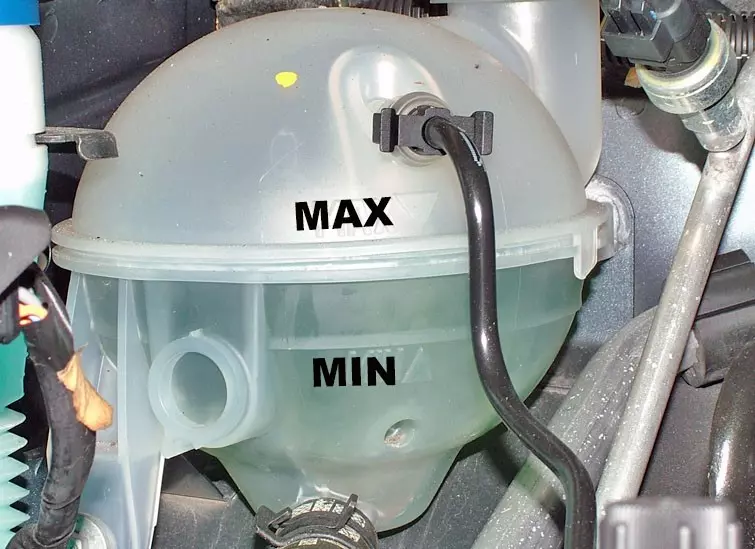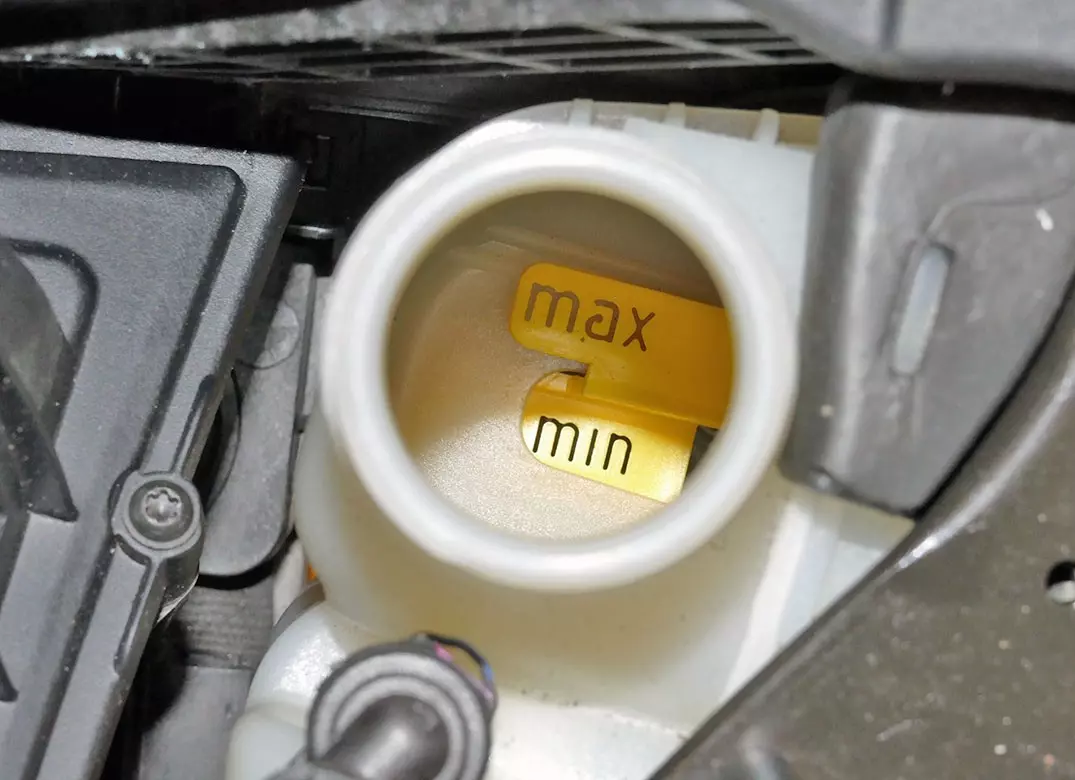
How to check you car's coolant level
Wait until the engine is cold, then open the bonnet and find the coolant expansion tank. This is normally an opaque plastic container with blue or pink liquid inside. Don’t confuse it with the screenwash reservoir.
Most coolant expansion tanks have MAX and MIN levels indicated on the side.

Although on some, you need to unscrew the filler cap to see the level. Only remove the cap when the engine is cold! When it’s hot, the coolant will be under pressure.

If the coolant level is just above, or below the MIN mark, topping up is required.
Coolant is made up of a mixture of water and antifreeze. You can buy the antifreeze in concentrated form that requires mixing with water, or as a premixed coolant already to be used.
If you’re using the concentrate, make up a 50/50 mix of antifreeze and water. Most manufacturers recommend using distilled water, as this will help reduce any chance of corrosion.
A typical coolant system comprises a series of pipes that run between the engine block, the radiator and an expansion tank. Other important elements are radiator fan(s) and the thermostat, which come into play once the coolant is up to operating temperature. Learn how all of the cooling system's elements work together here.
In an ideal world you shouldn't need to top up the coolant, but hoses and seals eventually degrade and leaks occur. Head here to find out why coolant gets low.
When should I change my car’s coolant?
If you're changing the coolant as part of a standard service procedure, you'll get different answers depending on who made your car and which antifreeze you use. If you're running a classic car and it uses glycol ethylene based antifreeze, which is often blue, it'll need to be renewed every couple of years. Don't be tempted to switch to Organic antifreeze (see below), because it could damage your engine’s seals and other cooling system components.
Most manufacturers of modern cars recommend 10-year intervals, or with very recent cars, the coolant won’t require changing - providing the correct antifreeze is used. In the case of the author's SLK55, Mercedes-AMG recommends changing the coolant (known as Organic Acid Technology) every 15 years. It's usually – but not always – pink. Every vehicle is different, so consult your Haynes manual or get in touch with your manufacturer's customer services department for advice.
Of course, if you're having to change a component that's part of the cooling system, such as the radiator, thermostat or coolant pump, you're going to lose at least some coolant. However, once the new part is fitted, most manufacturers recommend you completely drain the system down and refill it with new coolant.
Wondering what type of coolant to use in your car and how to change it? Haynes shows you how to replace your coolant here.
Watch this video to see how to change your coolant
Every Haynes manual shows you how to change your vehicle's coolant in easy-to-follow steps